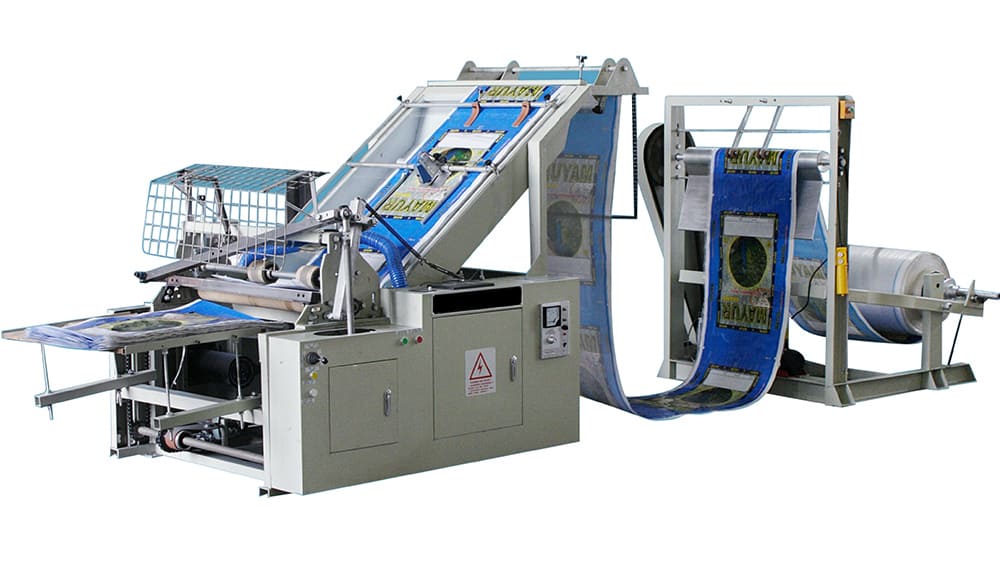


PP woven machines are integral to the production of woven polypropylene (PP) products, known for their durability, strength, and versatility. These machines play a crucial role in various industries, including packaging, agriculture, construction, and geotextiles. This comprehensive guide explores the functionalities, processes, applications, and technological advancements of PP woven machines, highlighting their significance in producing high-strength woven products.
PP woven machines are specifically designed to weave polypropylene tapes into woven fabric, which is then used to manufacture a wide range of products:
• Extrusion: The process begins with the extrusion of PP resin pellets into tapes of varying widths and thicknesses.
• Weaving: The woven process involves interlacing these tapes in a specific pattern to form a strong, cohesive fabric structure.
• Lamination and Printing: Some machines also integrate lamination and printing processes to enhance product functionality and aesthetics.
The extrusion unit is responsible for melting the PP resin pellets and extruding them into flat tapes of uniform thickness. Key components include:
• Extruder: Melts and shapes the PP resin into continuous tapes.
• Cooling System: Cools and solidifies the extruded tapes for further processing.
The weaving unit interlaces the extruded tapes into a woven fabric using shuttle or circular looms. Components include:
• Shuttle Looms: Traditional looms that weave tapes in a back-and-forth motion.
• Circular Looms: Modern looms that weave tapes in a circular motion, offering higher speed and efficiency.
Optional units that apply additional layers (lamination) or printed designs onto the woven fabric for specific applications:
• Lamination: Enhances fabric properties such as waterproofing or UV resistance.
• Printing: Adds branding, labels, or decorative patterns to the woven fabric.
PP woven products find extensive applications across various industries:
• Packaging: FIBC (Flexible Intermediate Bulk Containers), bulk bags, sacks, and wrapping fabrics for goods transportation and storage.
• Agriculture: Tarpaulins, ground covers, crop covers, and shade nets for agricultural protection and crop management.
• Construction: Geotextiles, scaffolding nets, and safety barriers for infrastructure projects.
• Consumer Goods: Shopping bags, beach mats, and outdoor furniture covers.
Modern PP woven machines feature automation and digital controls to improve efficiency and product quality:
• Automatic Tension Control: Ensures consistent tape tension during weaving.
• Digital Monitoring Systems: Monitor and adjust process parameters in real-time for optimal performance.
• Remote Control and Data Analytics: Enable operators to manage machines remotely and analyze production data for continuous improvement.
Advancements in machine design focus on increasing production speed while reducing energy consumption:
• High-Speed Circular Looms: Achieve weaving speeds of up to 1200 RPM (revolutions per minute).
• Energy-Efficient Motors and Components: Reduce operational costs and environmental impact.
PP woven products are recognized for their recyclability and minimal environmental impact:
• Recyclability: PP materials can be recycled into new products after use.
• Reduced Waste: Precision manufacturing processes minimize material waste during production.
• Sustainable Applications: Used in eco-friendly products like reusable shopping bags and eco-friendly packaging solutions.
In conclusion, PP woven machines are essential equipment in the production of high-strength woven products across diverse industries. By leveraging advanced technologies such as automation, digital controls, and high-speed designs, manufacturers can enhance productivity, improve product quality, and meet the growing demand for durable and sustainable woven solutions. Continuous innovation and adaptation to market needs will drive the evolution of PP woven machines, reinforcing their role as a cornerstone in modern manufacturing.
2024-08-15
2024-08-07
2024-07-31
2024-07-26